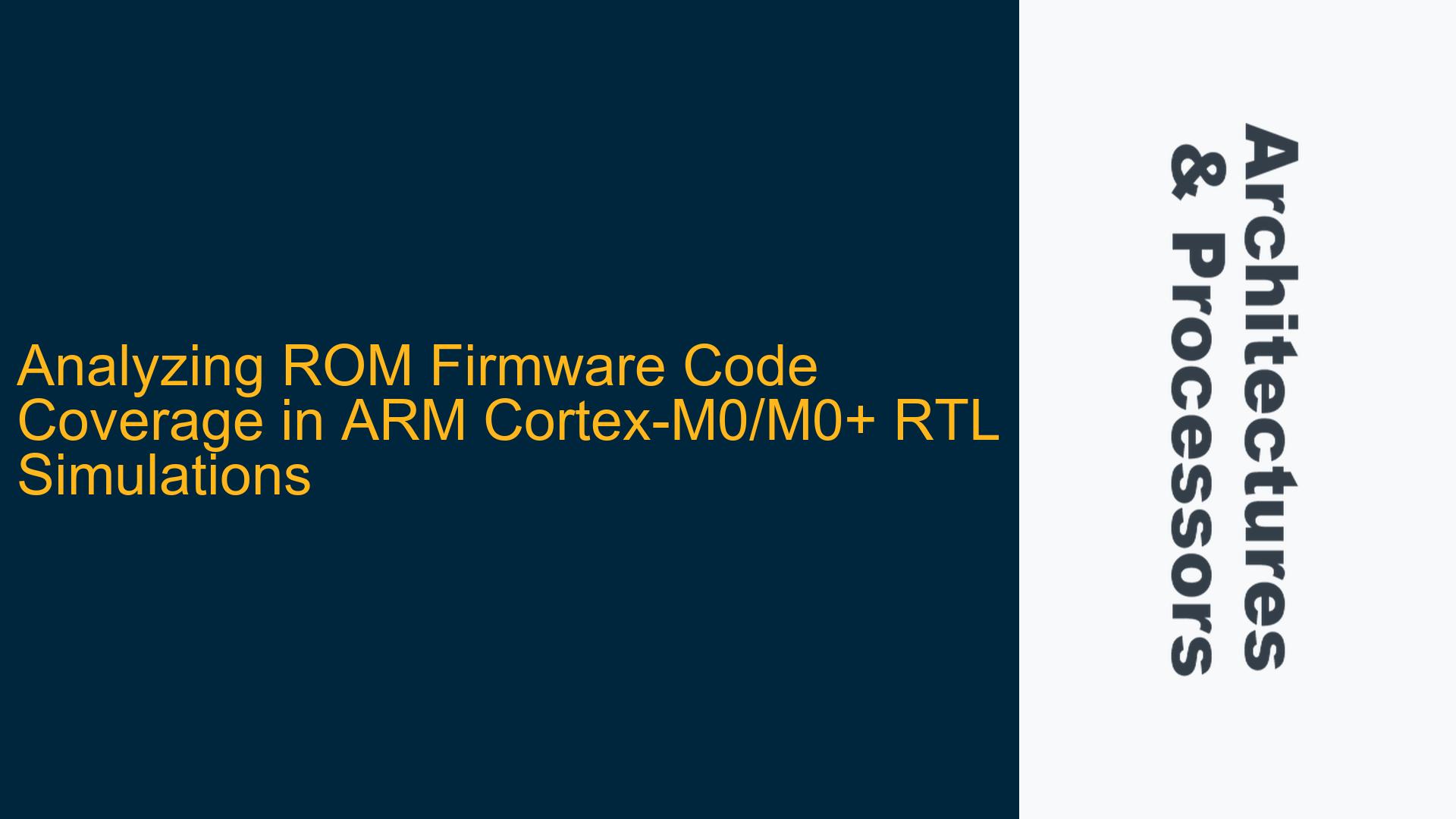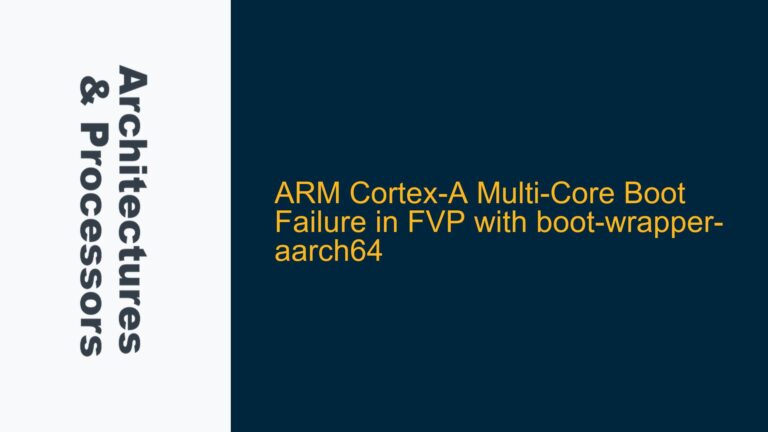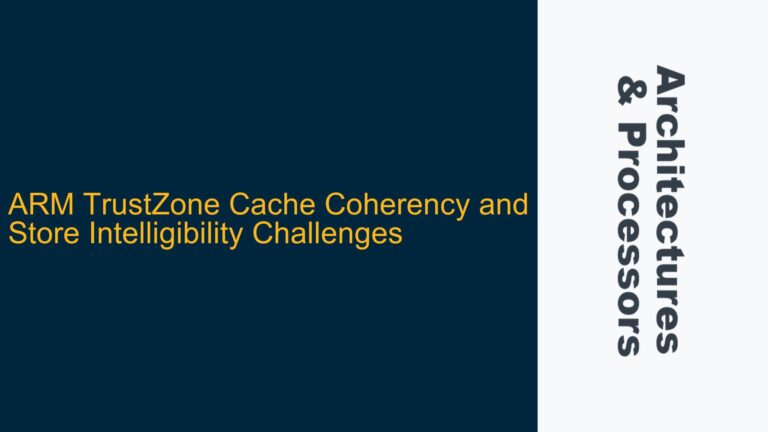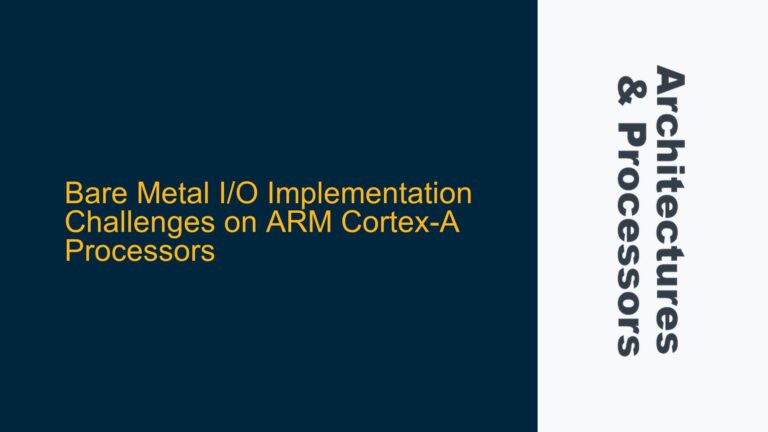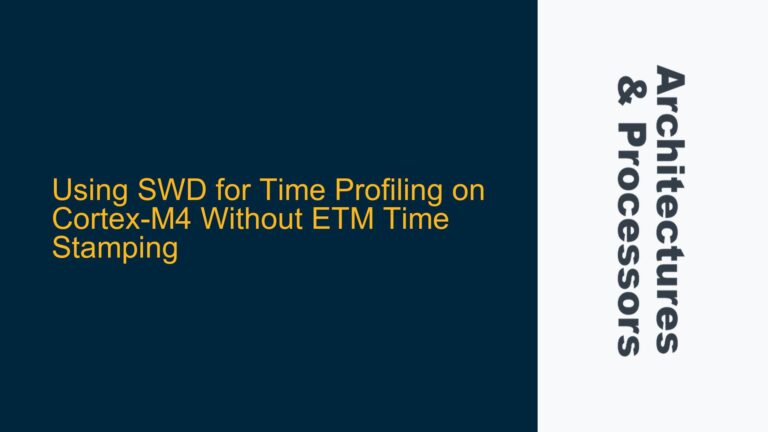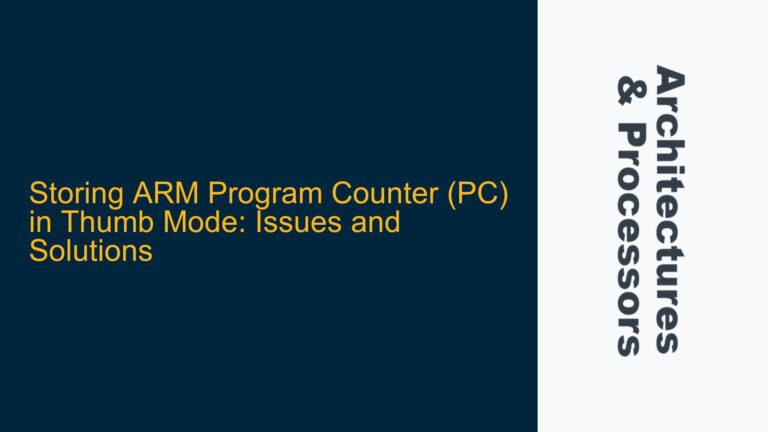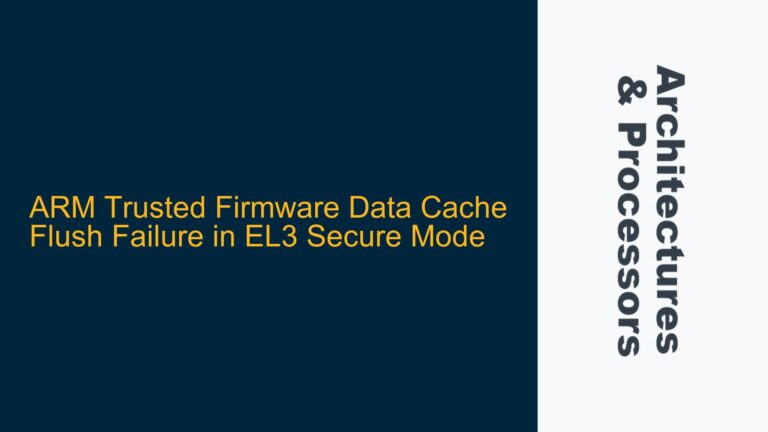ROM Firmware Code Coverage Challenges in RTL Simulation
When working with ARM Cortex-M0/M0+ processors, ensuring comprehensive ROM firmware code coverage during the RTL (Register Transfer Level) simulation phase is critical for validating the correctness and robustness of embedded systems. ROM firmware, being non-volatile and often critical to system boot-up and operation, must be thoroughly tested to ensure that all code paths are exercised under various scenarios. However, achieving this level of coverage in RTL simulation presents unique challenges due to the interplay between hardware and software, the limitations of simulation tools, and the intricacies of ARM Cortex-M0/M0+ architectures.
The primary challenge lies in the fact that RTL simulations are inherently hardware-focused, designed to verify the correctness of digital logic rather than the firmware running on the processor. While HDL (Hardware Description Language) simulators are excellent for verifying the behavior of registers, state machines, and interconnects, they are not inherently equipped to analyze software execution paths. This creates a gap in the verification process, as firmware code coverage is essential to ensure that all critical software functions are tested, especially in safety-critical systems.
Another challenge is the instrumentation of ROM firmware for code coverage analysis. Unlike RAM-based firmware, which can be modified dynamically during runtime, ROM firmware is fixed and cannot be altered once programmed. This limitation necessitates specialized techniques to track code execution without modifying the firmware itself. Additionally, the ARM Cortex-M0/M0+ processors, being highly optimized for low-power and low-cost applications, lack advanced features such as hardware performance counters or trace units, which are often used for code coverage analysis in more complex processors.
Finally, the integration of code coverage tools with HDL simulators is not always straightforward. While some simulators provide built-in support for code coverage, others require custom scripts or third-party tools to extract and analyze coverage data. This complexity can lead to incomplete or inaccurate coverage reports, making it difficult to identify untested code paths or potential firmware bugs.
Enabling Code Coverage in HDL Simulators and Instrumentation Techniques
To address the challenges of ROM firmware code coverage in RTL simulations, it is essential to understand the tools and techniques available for enabling and analyzing coverage. HDL simulators such as ModelSim, VCS, and Xcelium provide built-in support for code coverage, but their effectiveness depends on proper configuration and instrumentation.
The first step is to enable code coverage features in the HDL simulator. This typically involves setting specific flags or options in the simulation environment. For example, in ModelSim, the -coverage flag can be used to enable line, branch, and statement coverage. Similarly, in VCS, the -cm option allows users to specify the type of coverage to be collected, such as line, branch, or functional coverage. These options must be carefully selected to ensure that the coverage data collected is relevant to the firmware being tested.
Once code coverage is enabled, the next step is to instrument the ROM firmware. Instrumentation involves adding logic to the design to track the execution of specific code paths. This can be achieved using one of two approaches: hardware-based instrumentation or software-based instrumentation. Hardware-based instrumentation involves modifying the RTL design to include additional signals or counters that track firmware execution. For example, a counter can be added to monitor the number of times a specific ROM address is accessed. While this approach provides accurate coverage data, it requires significant modifications to the RTL design and may impact simulation performance.
Software-based instrumentation, on the other hand, involves modifying the firmware itself to include additional instructions or data structures that track code execution. For example, a global array can be used to record the execution of specific functions or branches. This approach is less intrusive than hardware-based instrumentation but requires careful implementation to avoid altering the behavior of the firmware. Additionally, software-based instrumentation may not be feasible for ROM firmware, as it cannot be modified after programming.
To overcome the limitations of ROM firmware instrumentation, some HDL simulators provide advanced features such as dynamic binary instrumentation (DBI). DBI allows the simulator to inject additional instructions into the firmware during runtime without modifying the original code. This technique is particularly useful for ROM firmware, as it enables code coverage analysis without altering the firmware itself. However, DBI requires significant computational resources and may not be supported by all HDL simulators.
Analyzing Code Coverage Reports and Optimizing Firmware Testing
After enabling code coverage and instrumenting the ROM firmware, the next step is to run the RTL simulation and analyze the resulting coverage report. The coverage report provides detailed information about which portions of the firmware were executed during the simulation, including line coverage, branch coverage, and statement coverage. This data is essential for identifying untested code paths and potential firmware bugs.
The first step in analyzing the coverage report is to identify gaps in coverage. For example, if a specific function or branch was not executed during the simulation, it may indicate that the test cases do not adequately cover all possible scenarios. In such cases, additional test cases must be developed to exercise the untested code paths. This may involve modifying the testbench or adding new stimuli to the simulation environment.
Another important aspect of coverage analysis is identifying redundant or unnecessary code. For example, if a specific block of code is executed multiple times without contributing to the overall functionality of the firmware, it may be a candidate for optimization. Removing redundant code not only improves firmware performance but also simplifies the verification process by reducing the number of code paths that need to be tested.
In addition to identifying gaps and redundancies, the coverage report can also be used to optimize the firmware testing process. For example, if a specific test case exercises a large portion of the firmware, it may be possible to reduce the number of test cases by focusing on those that provide the highest coverage. This approach, known as test case prioritization, can significantly reduce the time and effort required for firmware testing.
Finally, it is important to validate the accuracy of the coverage report. In some cases, the coverage data may be incomplete or inaccurate due to limitations in the HDL simulator or instrumentation techniques. For example, if the simulator does not support branch coverage, the report may not accurately reflect the execution of conditional statements in the firmware. To address this issue, it may be necessary to use additional tools or techniques, such as hardware emulation or FPGA prototyping, to validate the coverage data.
Implementing ARM Development Studio for Advanced Code Coverage Analysis
For developers working with ARM Cortex-M0/M0+ processors, ARM Development Studio (DS) provides a comprehensive set of tools for code coverage analysis, profiling, and optimization. ARM DS integrates seamlessly with ARM processors and provides advanced features for analyzing firmware execution, including instruction tracing, performance profiling, and code coverage analysis.
One of the key features of ARM DS is its support for instruction tracing, which allows developers to track the execution of individual instructions in the firmware. This feature is particularly useful for identifying untested code paths and potential firmware bugs. For example, if a specific instruction is not executed during the simulation, it may indicate that the test cases do not adequately cover all possible scenarios. ARM DS also provides detailed performance profiling data, which can be used to identify bottlenecks and optimize firmware performance.
In addition to instruction tracing, ARM DS provides advanced code coverage analysis features, including line coverage, branch coverage, and statement coverage. These features are integrated into the ARM DS debugger, allowing developers to analyze coverage data in real-time during the simulation. ARM DS also supports the generation of detailed coverage reports, which can be used to identify gaps in coverage and optimize the firmware testing process.
To use ARM DS for code coverage analysis, developers must first configure the tool to collect coverage data. This typically involves setting specific options in the ARM DS project settings, such as enabling code coverage and specifying the type of coverage to be collected. Once the tool is configured, developers can run the RTL simulation and analyze the resulting coverage data using the ARM DS debugger.
In conclusion, achieving comprehensive ROM firmware code coverage in RTL simulations for ARM Cortex-M0/M0+ processors requires a combination of proper tool configuration, advanced instrumentation techniques, and thorough coverage analysis. By leveraging the features of HDL simulators and ARM Development Studio, developers can ensure that all critical code paths are tested, leading to more robust and reliable embedded systems.
